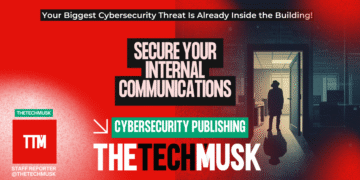In the ever-evolving field of cybersecurity, we sought insights from six professionals, including an Information Security Manager and a Cybersecurity Consultant, on promising emerging technologies or methods for combating cyber threats. From harnessing AI for cybercrime prevention to prioritizing the human element in cybersecurity, discover the top six promising methods these experts have found particularly effective.
- Harnessing AI for Cybercrime Prevention
- Taking a User Behavior Analytics Approach
- Discovering Zero Trust Architecture
- Including Extended Detection and Response
- Enhancing Cybersecurity Culture with Micro-Learning
- Prioritizing the Human Element in Cybersecurity
Harnessing AI for Cybercrime Prevention
Artificial intelligence (AI) is a promising new technology in the fight against cybercrime. It can be used to develop innovative methods to identify, halt, and manage cyberattacks.
For instance, AI can analyze large volumes of data to detect patterns and unusual activity that may indicate an attack. It can also develop new kinds of malware-detection and prevention systems. Furthermore, AI can automate the response to cyberattacks, potentially reducing the time it takes to contain and recover from an attack.
Shivtej Tata, Information Security Manager
Taking a User Behavior Analytics Approach
As someone who has managed cyber-security operations for years, I have seen various cyber threats. Currently, attackers are not only targeting big corporations but are also targeting smaller businesses in more rural areas.
The method I have found promising in combating cyber threats is using user behavior analytics. It’s a very dynamic method that analyzes changing data based on user behaviors. It models based on the emerging threats to understand the changing nature of the cyber threat landscape. Traditionally, we used static analysis in detecting cyber threats, which is no longer effective since cyber attacks are becoming more sophisticated. User behavior analytics, which is also based on techniques such as machine learning and AI, embraces a learning model that constantly adapts to combat cyber threats.
One such tool that enables user behavior analytics is Splunk, and I would recommend corporations explore the novel features that help them stay more vigilant.
Nalindrani Malimage, Cybersecurity Consultant, Burns and McDonnell
Discovering Zero Trust Architecture
The Zero Trust Architecture (ZTA) is an emerging cybersecurity approach that challenges traditional network security models. It operates on the principle of “never trust, always verify.”
Key elements include strong identity verification, micro-segmentation, least privilege access, continuous monitoring, and encryption. ZTA is promising for combating cyber threats, as it enhances security in an evolving threat landscape by minimizing trust assumptions and reducing the attack surface.
Jack Olier, Software Engineer, App Maisters Inc
Including Extended Detection and Response
The emerging technology that I have found particularly promising for combating cyber threats is Extended Detection and Response (XDR). XDR is a powerful tool for cybersecurity. It brings together security information from various parts of a company’s computer systems to find and stop threats quickly. XDR uses smart technology to discover tricky threats and can also act without people having to do everything.
The good thing is, more and more security teams are starting to use XDR. A report from Gartner says the XDR market will grow a lot, from $1.3 billion in 2022 to $6.6 billion by 2026. It offers comprehensive visibility, allowing security teams to monitor all activities from a centralized vantage point, enabling quicker threat mitigation.
XDR also significantly reduces false alarms, thereby sparing security teams from dedicating valuable time to non-critical issues.
Yogini Kuyate, Digital Marketing Executive, Matrix3D Infocom Private Ltd.
Enhancing Cybersecurity Culture with Micro-Learning
Micro-learning has been a big change for cybersecurity training and awareness culture. The weakest link in any cybersecurity chain is always going to be people, so treating cybersecurity as a cultural priority has long been something I’ve advocated for.
That said, people are not usually very happy to take cybersecurity training, even after failing a few phishing attempts. What I’ve seen work quite well, however, is to include bite-sized micro-learnings at a more frequent pace. Just a question or two slipped into an internal bit of news, a safety moment before a presentation, a message on a company lock screen—these have been quite effective for keeping cybersecurity top of mind and fixing good habits.
Onno Halsema, CEO, Contentoo
Prioritizing the Human Element in Cybersecurity
Focusing more on the people element seems to work more than investing in stronger security measures. There has been something of a shift in thinking in the cybersecurity scene, with more people pulling back from doing too many things like constant password resets, aggressive multi-factor authentication, and the like for standard business practices.
The reason is that people just will not comply with them at a 100% rate, leading to gaps that are easy to exploit in even the most sophisticated systems. The reinvigoration of cybersecurity training and awareness as a part of business culture seems to be more the thing that will help businesses stay secure.
Dragos Badea, CEO, Yarooms






















